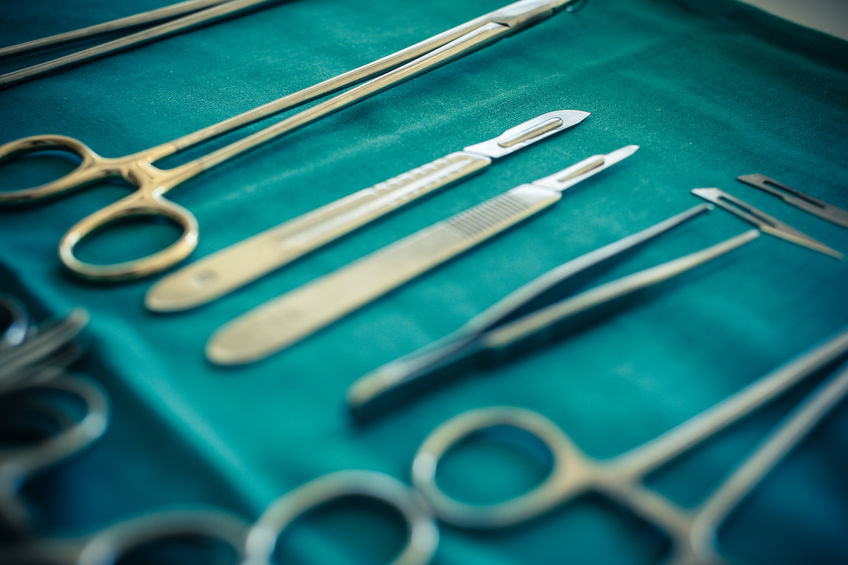
The glossary of surgical and orthopedic instruments is vast. There are many different tools designed to perform surgical procedures, used for holding, pulling, clamping, cutting, crushing, or closing a wound. Generally speaking, there are four different types of surgical instruments:
- utility
- suture
- surgical
- dissecting
Here are some of the most popular terms related to instruments used in general surgery.
Forceps
The forceps is a surgical instrument similar to pliers. There are many varieties of different forms, used in many branches of surgery. For example, the obstetric forceps is used for grasping the skull and extracting the fetus from the pelvis, when the birth must be artificially terminated. It consists of two spoons that are articulated between them and sometimes there is also an attached handle that helps the extraction. On the other hand, the dental forceps is specially designed for the extraction of different teeth. There are also clamping forceps, which are also known as hemostats; they are used by surgeons to control blood flow during the surgical intervention. They have locking and can also be used to hold tissue.
Scalpels
A scalpel is a basic surgical tool that looks like a knife with a very sharp blade that can be fixed or detachable. A scalpel can make an incision in a tissue very easily; a light touch with the hand is sufficient. Scalpels are thin and flat to ensure straight cuts. Due to the delicate use of this instrument, its handle is covered with anti-slip material.
Using scalpels is attested in ancient Egypt, where people used to make incisions for medical purposes using sharp scalpels made from obsidian. Nowadays, these instruments are made of stainless steel or titanium.
Incision
Surgical sectioning of the tissues with the help of a scalpel or other cutting instrument is known as an incision. There are several types of incisions in surgery:
- Vertical incisions:
- Median laparotomies
- Paramedic laparotomies
- Oblique incisions (it is considered to have a low risk of eventration):
- Kocher subcostal incision
- Mac Burney incision (often used in appendectomies)
- Phocas incision
- Transverse incisions – used in interventions that require a wide opening of the abdominal cavity; they have a straight or arched path, they can be unilateral or bilateral.
Surgical suture
This is one of the most used maneuvers in surgery, which ensures that parts of a wound sewn together to allow anatomical restoration.
Depending on the intervention time, the suture can be:
- primary, performed within 6 hours after the trauma
- delayed – when the open wound is re-bandaged, suture threads are tighten
- secondary suture is indicated in the case of wounds which have been already sutured, but they have open again. If the suture fails again, the procedure is repeated until the wound closes.
The suture tools include needle ports (as the name suggests they are instruments used to handle the needles during suture. There are two main models, the other ones being their variants: the Mathieu and the Hegar ports), Hagedorn needles and other special needles.
